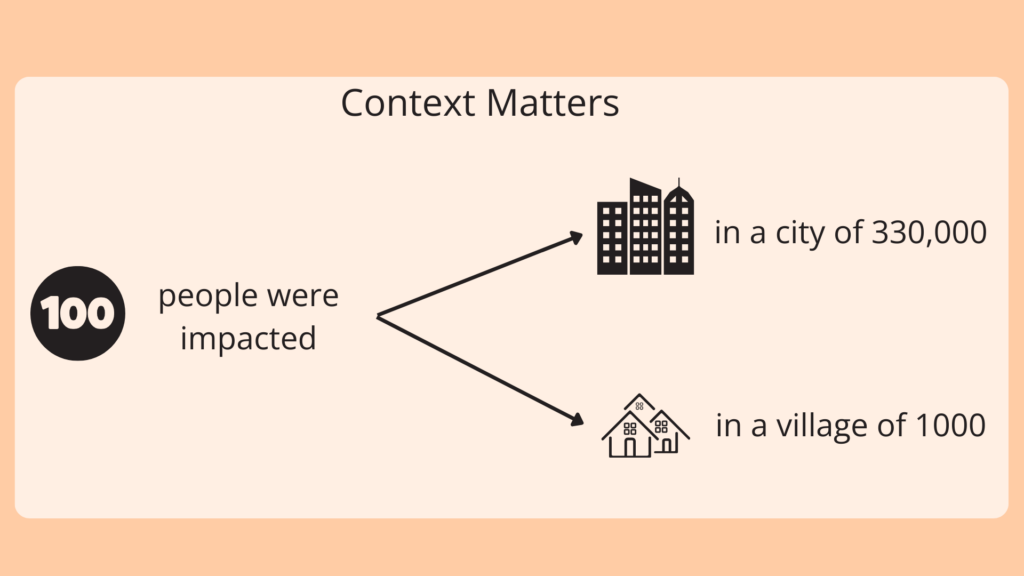As with research methods, there are a diversity of approaches to capturing research impact which draw from qualitative and quantitative ways of thinking. In this resource, you will see examples of impact measurements which use qualitative and quantitative data collection. Impact success is measured though different lenses, such as reach and significance. This is not exclusive to REF Impact Case Studies. Impact work has high value for society, researchers and the University outside of REF.
Audience Framing and Contextualisation
To understand the impact of your work and how to capture potential success, it is important to know who you are affecting or influencing. The “audience” are changed as a result of your research. They may be a user group, an industry, a patient base, a community, etc. The size and form of your audience should guide how you communicate with them and can inform your impact capture strategy. Having understanding of your audience can help to demonstrate impact, but must be contextualised.
Context situates your impact story within the wider world, making its reach known. This context can also extend to significance, by making the depth of change more visible. When you prepare your project, situating your impact within the wider context can also help you to plan how you will capture evidence of your impact.
Using Qualitative and Quantitative Tools
As in research, qualitative and quantitative data collection tools provide complementary data sets. Quantitative tools can demonstrate unit value through changes in numbers. This is particularly useful when aiming to evidence the reach of an impact. Qualitative tools are valuable in capturing the depth at which an impact has permeated and for measuring the significance of impact. What types of qualitative and quantitative tools can you think of?
Below is a worked example of impact, which may be contextualised and captured both quantitively and qualitatively:
In this example, both the qualitative and quantitative streams have room to grow. For example, the researchers could choose to add data on any additional groups who begin to use the underpinning research as part of other initiatives. They could design a quantitative survey or collect a second round of longer-term health and wellbeing testimonials from those who have improved health literacy because of the initial research dissemination. Or they could collect statements from the community group on how the project has informed their practice.
This example demonstrates measurement methodologies which have been deployed throughout/beyond the activities and planned into impact timescales. Some methods focus on capturing impacts as they happen e.g., speaking to attendees or gathering attendance data. Other methods have been deployed to capture impact which has happened beyond the immediate project timescales e.g., testimonials detailing enduring impacts.
By planning impact capture over time, researchers have the opportunity to respond to the impact generated and think about its next steps.
See our resources on Research Impact Evidence or Embedding Impact for more information.
For support in developing research engagement and impact, contact the Impact Team or the Head of Engagement with Research

